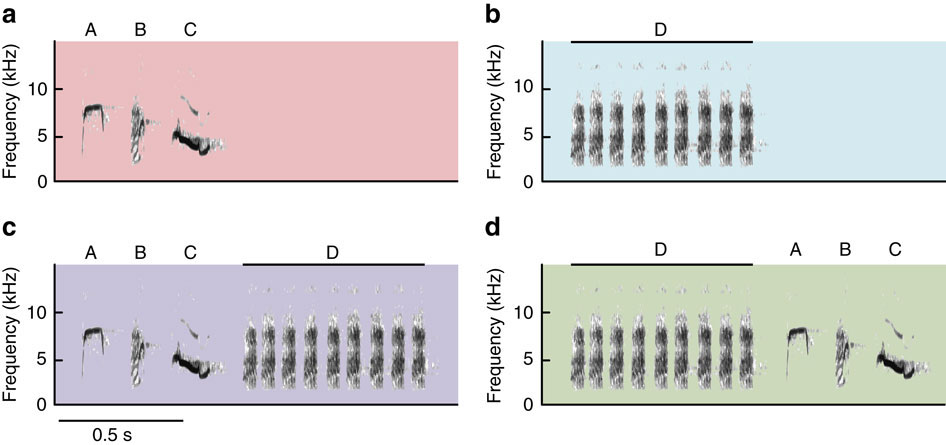Research Abstract
鳥類の鳴き声における合成的統語の実験的証拠
Experimental evidence for compositional syntax in bird calls
2016年3月8日 Nature Communications 7 : 10986 doi: 10.1038/ncomms10986

ヒトの言語は、異なる有限の単語をつなぎ合わせ、無限の意味を作り出す組み合わせ規則(つまり合成的統語)に基づいている。いくつかの動物の音声においても異なる基本要素(音素)の組み合わせがみられるが、合成的統語がヒト以外の動物でも進化してきたのかどうかは、これまで明らかでなかった。今回我々は、野鳥の一種、シジュウカラ(Parus minor)を対象として、動物における合成的統語の存在を示す、初めての実験的証拠を得たので報告する。シジュウカラは、発声レパートリーに10種類以上の音素があり、それらの音素を単独で、もしくは他の音素と組み合わせて使う。音声をプレイバックし、反応を調べる実験を行ったところ、シジュウカラは「ABC」という音素群と「D」という音素からそれぞれ異なる意味(「警戒しろ」と「ここに集まれ」)を読み解き、「ABC-D」という組み合わせ音からは2つの意味を同時に理解することが明らかになった。しかし、組み合わせの順序を人工的に逆(「D-ABC」)にして聞かせた場合、シジュウカラはほとんど警戒も集まりもしなかった。したがって、合成的統語はヒトの言語に固有なものではなく、情報伝達の基本的機構の1つとして動物において独立に進化した可能性がある。
Toshitaka N. Suzuki, David Wheatcroft & Michael Griesser
Corresponding Author
Human language can express limitless meanings from a finite set of words based on combinatorial rules (i.e., compositional syntax). Although animal vocalizations may be comprised of different basic elements (notes), it remains unknown whether compositional syntax has also evolved in animals. Here we report the first experimental evidence for compositional syntax in a wild animal species, the Japanese great tit (Parus minor). Tits have over ten different notes in their vocal repertoire and use them either solely or in combination with other notes. Experiments reveal that receivers extract different meanings from ‘ABC’ (scan for danger) and ‘D’ notes (approach the caller), and a compound meaning from ‘ABC–D’ combinations. However, receivers rarely scan and approach when note ordering is artificially reversed (‘D–ABC’). Thus, compositional syntax is not unique to human language but may have evolved independently in animals as one of the basic mechanisms of information transmission.

